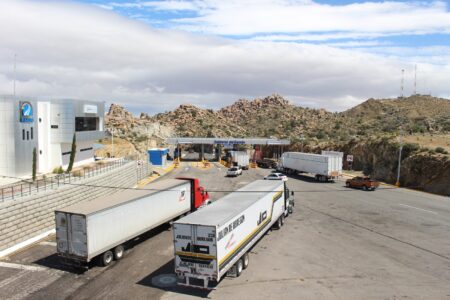In today’s rapidly evolving business landscape, efficient transportation systems are crucial for the success of any organization. From logistics and supply chain management to timely delivery of goods and customer satisfaction, businesses rely heavily on well-planned and executed transportation operations. This is where a Transportation Management System (TMS) comes into play — a TMS is a software solution that helps companies streamline their transportation processes, providing increased visibility, control, and cost savings. Let’s explore how implementing a TMS in your business can positively impact your overall operations.

Software Selection and Implementation
To ensure that your customized transportation management system (TMS) meets your business needs, careful evaluation of different options is necessary. Suppliers like Adexin transportation software development can offer a range of options to choose from, each uniquely tailored to specific business requirements. When choosing the right TMS for your organization, consider factors such as ease of use, scalability, integration capabilities with other systems, and support and maintenance services. Once you have selected your TMS, proper implementation is crucial to maximize its benefits, involving data migration from existing systems, user training, and testing before going live.
Comprehensive Needs Assessment
A comprehensive needs assessment is an essential step in the implementation process of a TMS. This assessment includes a detailed analysis of your current transportation processes, identifying areas of inefficiency and potential improvement. Key stakeholders should be involved in this phase to ensure the TMS aligns with both current and future business strategies.
The selected TMS should offer tailored solutions to address your specific transportation needs, such as route optimization, carrier selection, and tracking capabilities. With a comprehensive needs assessment, you can ensure that the TMS is fully utilized and integrated into your existing systems seamlessly.
Stakeholder Engagement
Engaging stakeholders from the outset ensures that the system is designed and implemented with the end-users in mind, leading to higher adoption rates and more effective utilization. Participation from various departments, including logistics, finance, customer service, and IT, provides valuable insights into the diverse needs and challenges faced by the organization.
The involvement of stakeholders also helps in setting realistic goals and KPIs for the TMS, aligning it with overall business objectives. Plus, consistent communication and training throughout the implementation process ensure a smooth transition and greater user buy-in.
Training and Education
Training and education are key components for the successful deployment and adoption of a Transportation Management System (TMS) within an organization. Provide comprehensive training sessions tailored to the different roles within the company, ensuring that each employee understands how to utilize the system effectively for their specific tasks.
Such training empowers employees to leverage the full capabilities of the TMS while also promoting confidence in using the tool. Ongoing education programs keep staff updated on new features and best practices, thereby continuously enhancing the TMS’s value to the business. Investing in thorough training and education ultimately results in a smoother transition, higher productivity levels, and a significant return on investment.
Data Integration
A robust TMS should have the capability to seamlessly integrate with existing Enterprise Resource Planning (ERP), Warehouse Management Systems (WMS), and Customer Relationship Management (CRM) systems.
This integration ensures that all relevant data, such as inventory levels, customer orders, and shipping information, is synchronized, providing a holistic view of your transportation operations. This real-time data enables you to make informed decisions and quickly adapt to any changes in the supply chain and customer demand, reducing delays and improving overall efficiency.
Customization and Configuration
Customizing and configuring the TMS, or Transportation Management System, can greatly benefit businesses that have unique processes and requirements. By tailoring the system to meet specific needs, companies can increase efficiency and reduce costs associated with transportation management.
With customization, businesses can streamline their processes and improve communication among different departments. Configuration also allows for better visibility of shipments, enabling companies to make informed decisions and adjust their strategies accordingly.
Continuous Monitoring and Evaluation
The process of implementing a TMS should not end once it has been successfully deployed. Continuous monitoring and evaluation are necessary to ensure that the system is functioning as intended and delivering the expected results.
Tracking key performance indicators (KPIs) such as on-time delivery, cost per shipment, and carrier performance can identify areas for improvement and inform decision-making processes. Regular reviews also allow for the identification of any issues or inefficiencies. To maximize the benefits of a TMS, continuous monitoring and evaluation are essential for ongoing optimization.

Implementing a Transportation Management System (TMS) can significantly enhance the efficiency, transparency, and cost-effectiveness of a company’s transportation operations. By carefully selecting, customizing, and continuously evaluating a TMS, businesses can address their unique challenges and requirements, ensuring seamless integration with existing systems and processes.
Stakeholder engagement, comprehensive training, and ongoing monitoring are key to unlocking the full potential of a TMS. Ultimately, a well-implemented TMS can benefit businesses by increasing customer satisfaction, reducing costs, and providing a competitive advantage in the dynamic world of transportation and logistics.

